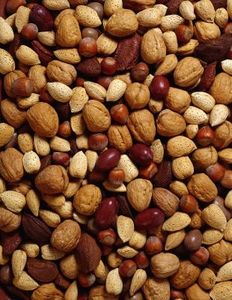Difference between revisions of "Nuts and Kernels"
| Line 1: | Line 1: | ||
{{Infobox_Miscellaneous | {{Infobox_Miscellaneous | ||
| image = Nuts_and_kernels-1.jpg | | image = Nuts_and_kernels-1.jpg | ||
| − | | origin = | + | | origin = - |
| − | | stowage factor = | + | | stowage factor = <ul><li>1,95 m <sup>3</sup>/t (bagged hazelnuts)</li><li>2,12 m<sup>3</sup>/t (bagged cashew nuts)</li><li>2,69 m<sup>3</sup>/t (bagged Brazil nuts) |
| humidity and moisture = | | humidity and moisture = | ||
| ventilation = | | ventilation = | ||
Revision as of 15:40, 29 January 2014
| Infobox on Nuts and Kernels | |
|---|---|
| Example of Nuts and Kernels |  |
| Facts | |
| Origin | - |
| Stowage factor (in m3/t) |
|
| Humidity / moisture | |
| Ventilation | |
| Risk factors | |
Nuts and Kernels
Contents
Description
Usually shipped in bags or cartons. Used for eating or for extraction of oil. Liable to mould damage and splitting, which may be due to natural causes. Splitting may be caused by late rains prior to the harvesting of the nuts or through being shipped in a damp condition; mould subsequently forming in the cavities. This mould may develop after shipment, during transit. Nuts and kernels are similarly affected by moisture.
Nuts and kernels are particularly susceptible to shrinkage and loss in weight, the degree of which varies considerably according to the year of the crop. Liable to infestation, which can in some cases be avoided by fumigation before shipment. Older crops are specially prone to damage by weevil and may become rancid. The crop year is an important point for the surveyor’s consideration. It is not uncommon for old season’s nuts to be mixed when the new season’s shipment takes place, and when dealing with questions of transit damage this possibility should not be overlooked.
Some nuts and kernels are liable to heat and ferment, particularly if shipped in damp condition.
Full information on this product is in the process of completion.











